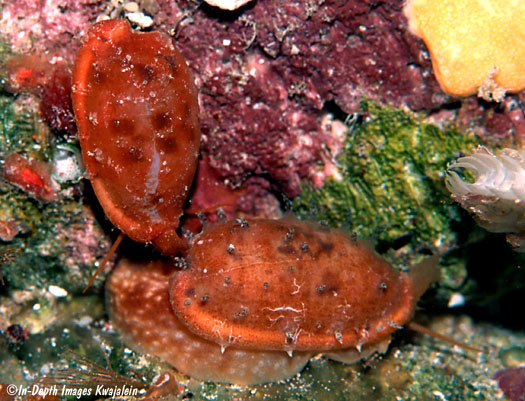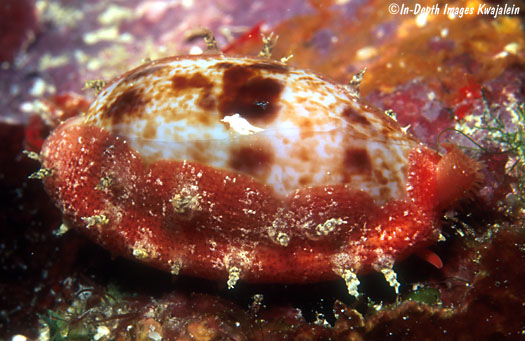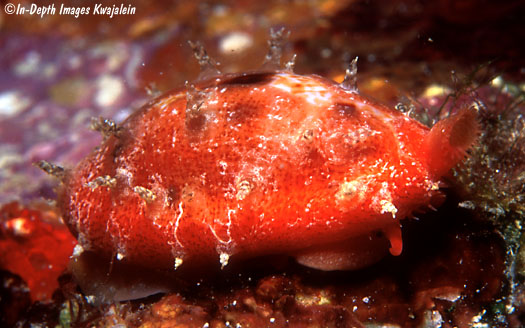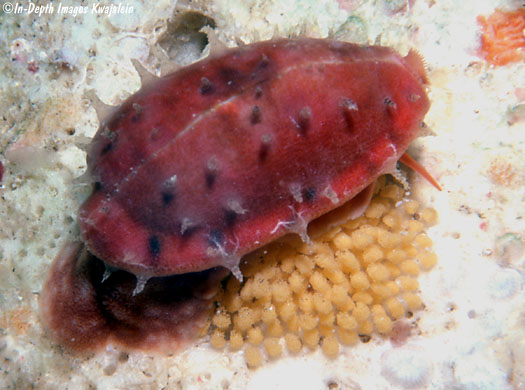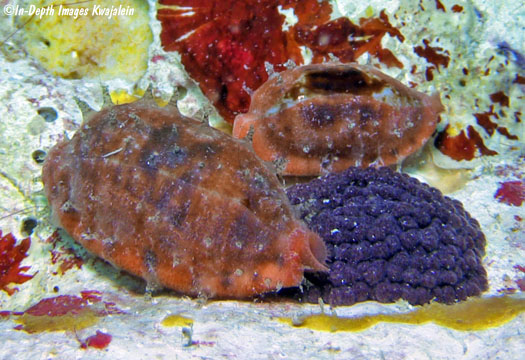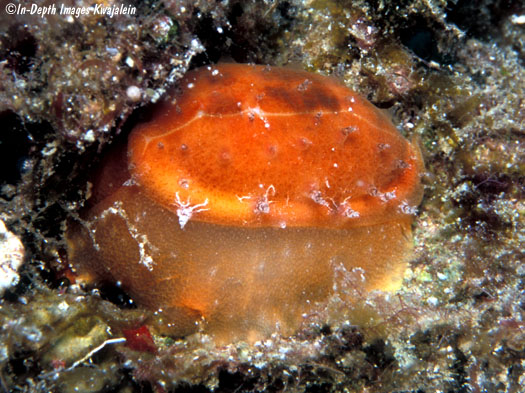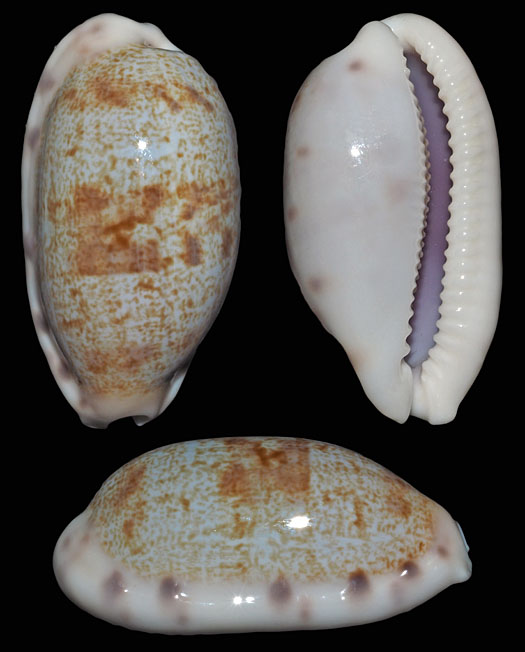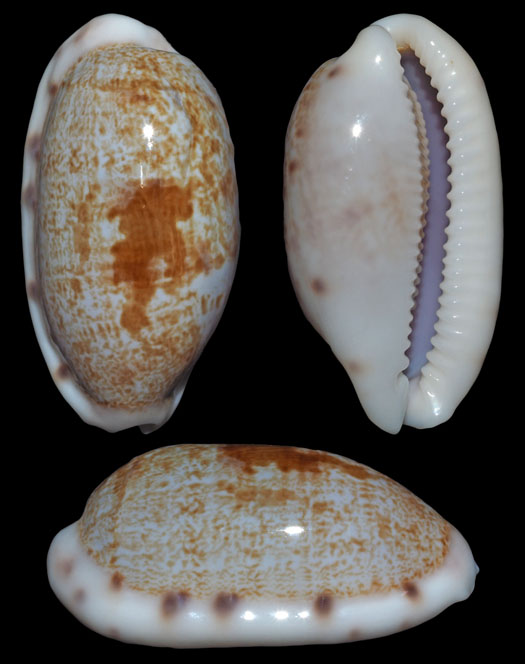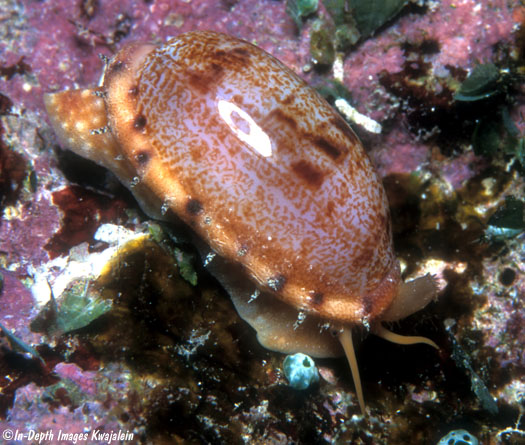
This is a species with a confused nomenclatural history. The cowry is very similar in appearance to Talostolida teres, and shell characteristics of the two species do indeed seem to overlap. However, a combination of differences in typical shell morphology, coupled with animal external and internal anatomy and DNA evidence, points to the two being separate species. However, the similarities and the variability of the shells have led to many names being introduced for these animals, and these various names were often in the past used for the wrong species. Lorenz (2002) does a very credible job of sorting out the nomenclatural confusion between these and several similar species and has settled on the names we are using here. (The Lorenz work put both species in the genus Blasicrura, but DNA analysis by Meyer (2003) suggests they belong in the separate genus Talostolida.) Both species are somewhat variable throughout their ranges. We encourage you to look at the Lorenz book if you would like further information. Our impression of the Kwajalein specimens is that T. pellucens tends to be larger and wider than T. teres. T. teres tends to have small dark spots just along the lateral margins, while those of T. pellucens are usually larger and extend a bit onto the base. The base of a fully adult T. pellucens shell is usually white, while in T. teres, you can usually easily see the extension of the dorsal banding pattern extending across the center of the columella. On the animal's mantle, T. pellucens has discrete conical to pointed papillae that seem studded with whitish granules. Papillae on T. teres are mostly smaller, giving the mantle a fuzzier appearance. The scattered larger papillae tend to be branched at the tips. The clincher for us is that individuals of the different species seem to have no trouble recognizing their differences; we have seen quite a number of both species, and whenever we find them paired up, it is always the same forms that are together. Obviously there is still work that can be done, particularly with DNA analysis of well documented individual animals from different locations throughout the ranges of the species. The previous discussion was not intended to provide any answers, but simply to give a reason for the names we chose to use. All that said, there are still numerous specimens we see that are not clear to us. It is entirely possible that researchers more familiar with these two species will tell us that some of our photos are incorrectly identified. We invite such comments at uwkwaj@yahoo.com. Talostolida pellucens can be found under rocks on the intertidal interisland reefs, as well as on shallow subtidal lagoon reefs. Specimens are also seen on lagoon pinnacles and on the leeward seaward reef. Depths range from 0-25m or more. This species is strongly nocturnal, hiding away by day and generally seen out in the open at night. Its bright red mantle, which the animal does not readily retract, is quite visible under the glare of a diver’s flashlight. At night, these mollusks are frequently observed in pairs. This species, like a number of other cowries possessing red mantles, can autotomize the posterior portion of its foot when disturbed. If you pick up a specimen that is out crawling about with its mantle extended, the rear part of the foot may drop off as the foot and mantle retract into the shell, sort of like the tail of a disturbed gecko. Presumably this is to entice the predator causing the disturbance to go for the chunk of foot and allow the rest of the animal to crawl away. This species appears to be widely distributed in the Indo-Pacific.


